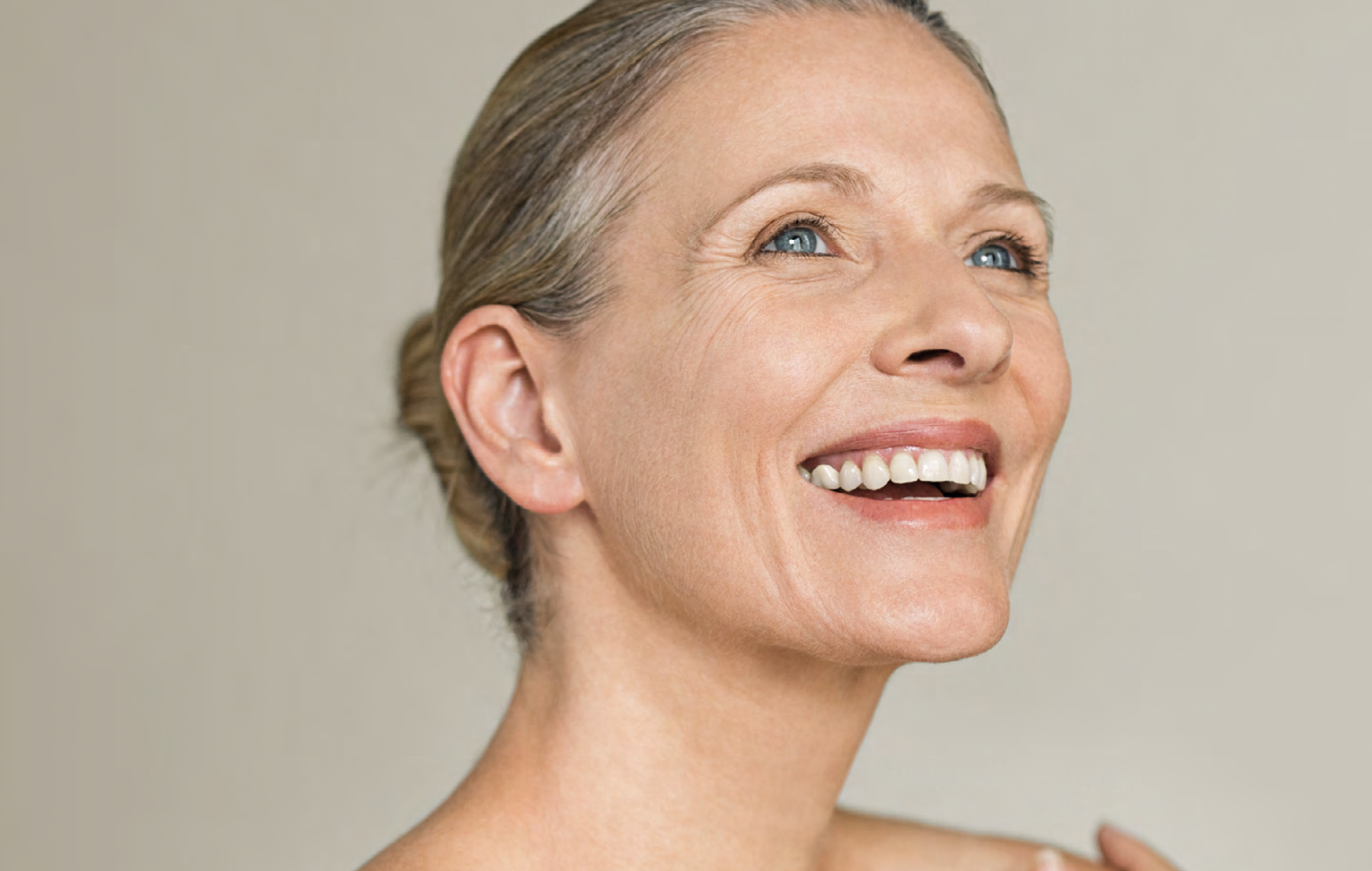By Mariève Inoue
They can appear on your face, neck, and hands, making your skin look uneven, but you can do something about them.
Like wrinkles, dark spots are a sign of time marching on. Skin cells called melanocytes produce melanin, the pigment responsible for skin tone. “Sometimes these cells can become overexcited and overproduce pigment, which forms a dark spot,” explains Dr. Vincent Richer, a dermatologist at Pacific Derm in Vancouver. The condition is called hyperpigmentation.
These dark spots, also known as age spots or liver spots, are typically “sunspots”—a result of time spent in the sun over the years, especially when the skin wasn’t adequately protected from ultraviolet rays, says Vee Mistry, the founder and owner of Toronto facial studio and e-commerce platform SKINBYVEE.
How can you lighten hyperpigmentation and prevent new spots? Our experts have the answers.
What kinds of hyperpigmentation are there?
The most common types are sunspots (also known as solar lentigines or, less formally, lentigos), melasma (or “pregnancy mask”), and post-inflammatory hyperpigmentation, which can appear after a pimple or a burn. According to Richer, in all three cases, UV-ray exposure and genetic factors are at play.
“You can develop spots as early as in your 20s,” says Marie-Hélène Lair, director of responsible innovation at Clarins. “They can be caused by sunburn or by pimples that were manipulated.” With melasma, which is linked to hormonal changes, “there is often an accumulation of melanin under the eyes and on the cheeks,” she adds.
How do sun spots differ from freckles?
Freckles are hereditary and appear from a young age, especially in very fair-skinned people. They can become more visible after sun exposure. Sunspots are more common in older people, as they are linked to an accumulation of sun damage.
When should I have my sunspots checked by a health professional?
“A sunspot that is larger than the rest, irregular in shape, very dark, or unevenly pigmented could end up being a type of lentigo maligna melanoma,” Richer says. He recommends consulting a doctor if you notice a spot that is growing.
What’s the best way to prevent dark spots from forming?
Since spots are linked to sun exposure, try to limit how much time you spend in the sun and do your best to protect yourself when you do go out. Seek shade, wear a hat and sunglasses, and cover your skin with clothing. (UV-protective clothing is best.) “Wearing sunscreen is crucial if you’re trying to minimize dark spots,” Lair says. Choosing a broad-spectrum sunscreen with an SPF of at least 30 and putting it on every morning is a great start, but don’t forget to reapply it regularly throughout the day.
Can all skin tones develop dark spots?
Yes, but “darker skin tones are even more likely to develop them,” Lair says. They can look like spots on light skin, but in darker complexions, they can result in uneven skin tone near the mouth, on the neck, or sometimes on the forehead.
Which skin-care ingredients can help minimize dark spots?
When it comes to dealing with hyperpigmentation, “there are some wonderful ingredients on the market,” Mistry says. Here are a few to consider.
• Ingredients from the vitamin A family (such as retinol) help accelerate cell renewal and promote a more even complexion. • Vitamin C is a powerful antioxidant that helps protect the skin from free radicals, which are one cause of cellular aging. It also has brightening and anti-inflammatory properties.
• Niacinamide works on a cellular level to brighten the skin, making dark spots less visible. “I find it works really well on pigmentation that may be a little more red or brown, as with a spot caused by an acne pimple,” Mistry says.
• Alpha-hydroxy acids (AHAs), such as glycolic acid and lactic acid, are chemical exfoliants that can also help brighten the skin.
•Hydroquinone is an ingredient that can help reduce melanocyte activity, but it requires a prescription. Accord- ing to Richer, it’s not recommended for long-term use but can be used as a treatment for a few months at a time under medical supervision.
What’s the best way to integrate these ingredients into my daily skin-care routine?
Lair suggests using dark spot correctors at night. “Chemical exfoliants should be avoided during the sunny season,” she warns, as they can increase sun sensitivity.
If you want to add glycolic acid to your routine, Mistry recommends a cleanser that contains the ingredient rather than a serum or cream; it won’t stay on as long, making it much gentler on the skin. You can then add a serum containing vitamin C, lactic acid, or niacinamide and a moisturizer before topping everything off with your sunscreen of choice.
If you want to try using vitamin A, apply it before bed and layer a hydrating sleeping mask on top of it to lessen its drying effect.
What treatments at the aesthetician’s or dermatologist’s office can help fade dark spots?
Mistry uses an LED machine that works at different depths in the skin to target dark spots and other signs of aging such as wrinkles and loss of volume. Microneedling, which stimulates the renewal of skin cells, can also help brighten the skin, while chemical peels exfoliate dead skin cells, revealing a brighter, more even complexion.
Some clinics offer intense pulsed light (IPL), a treatment that can minimize redness and sunspots on lighter skin. Pigment lasers can also target spots safely and with precision, Richer says, and laser resurfacing treatments can “normalize pigment.”
Although they call for a longer recovery period, these treatments can help improve skin texture and luminosity as well as reduce the appearance of fine lines.
Repeating some of these treatments is often necessary to optimize their effects. “Generally, results can last up to one or two years, especially if you protect your investment with appropriate skincare at home,” Richer says.
Photo: Laurence Labat





